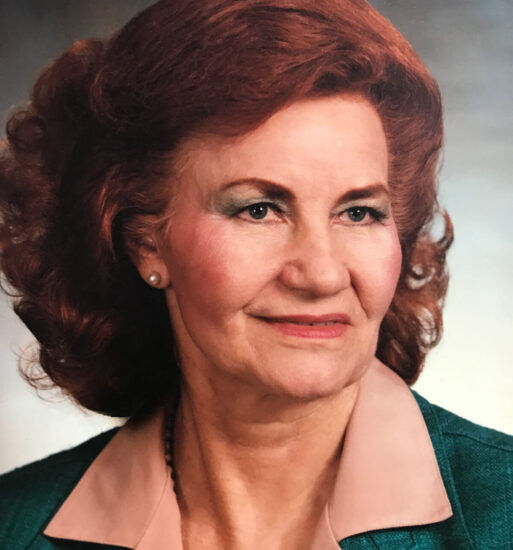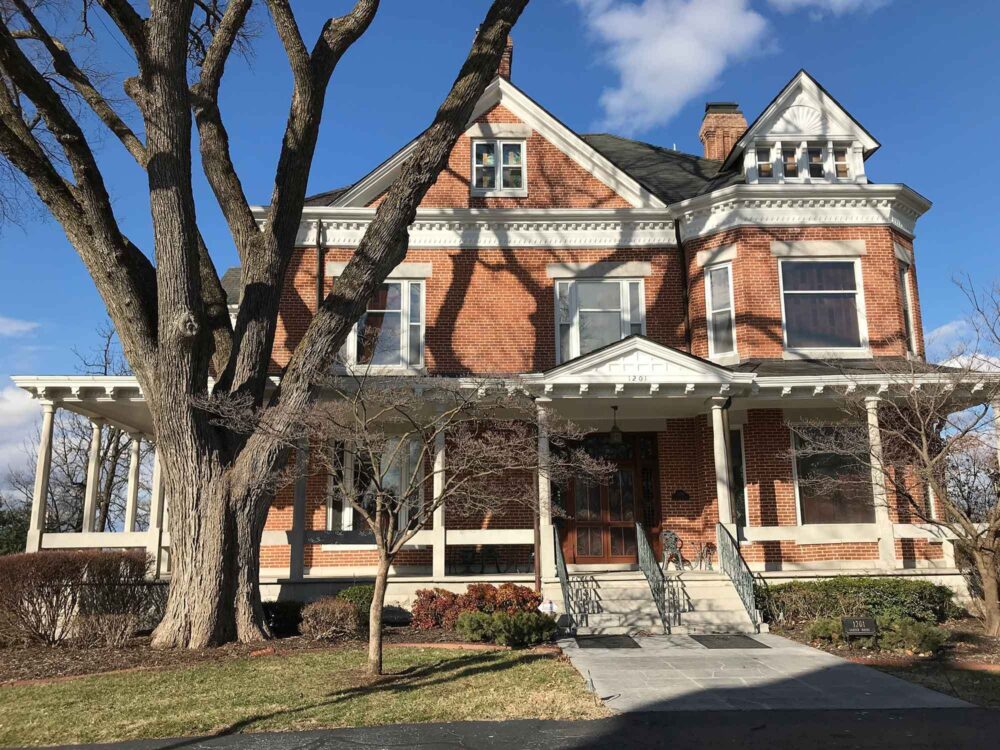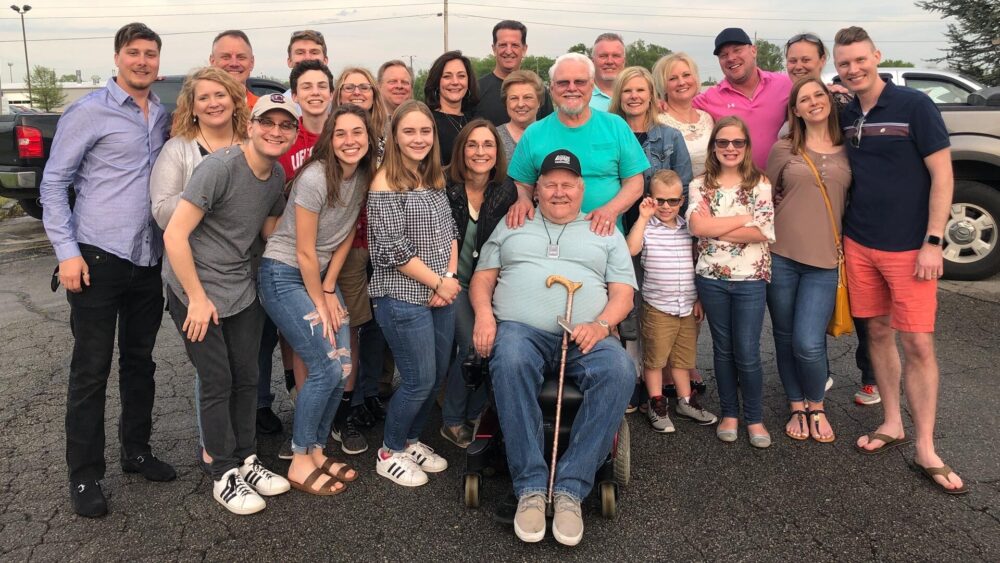CFO Stories
Ruth I. Kolpin’s Legacy: Shifting brings streamlined service
Ruth I. Kolpin Foundation merges with the CFO and the Carthage Community Foundation, allowing greater ease of fund distribution.

Ruth I. Kolpin Foundation merges with the CFO and the Carthage Community Foundation, allowing greater ease of fund distribution.
The shining star atop the Jasper County Courthouse reminds of the heart and help of Ruth Kolpin, a radio and TV pioneer who spent most of her career in Carthage. In the early 1960s, she led an effort to light the star 365 days a year — rather than only during the holiday season — as a visual reminder of the need for peace during the Vietnam War.
“A star atop the Jasper County courthouse was dedicated Friday night as a guiding star and a star of peace,” noted the Kansas City Star in 1964. “The governors of four states, Arkansas, Missouri, Kansas and Oklahoma issued proclamations to that effect.”
The star still shines today, as does Kolpin’s work in the community.
“You can help others with what you have,” says Ron Petersen, one of Kolpin’s two sons. “The old adage in the Bible says that those that have more will be tested. She gave back because she had more, and it made her feel good to be able to help.”
Even though she died in 2019, her efforts continue — now, in a new way — through the Ruth I. Kolpin Foundation, formerly a private foundation that recently transitioned to a donor-advised fund with the CFO.
In its new iteration, the fund will still contribute to community causes, but the CFO will manage administrative requirements that the foundation formerly had to handle on its own.
“It gives us a lot more to work with — and the way that the investments are made and managed, it took that pressure off of us, too,” Petersen says.

Ruth Kolpin was a longtime business leader in Carthage, where and her husband purchased KDMO AM in 1962. She also ultimately became a pioneer in the cable television industry. (Photo provided by Ron Petersen)
Kolpin’s story began in Kansas, when she was born in 1922 into a family that eventually included six children.
“My granddad taught all of these kids, even the girls, how to work and provide for themselves,” Petersen says, as well as an unexpected skill: “He taught them how to box.”
Kolpin, the second-oldest child, ultimately married a farmer, and to the union two sons were born. But after several years of troubled crops, a massive hailstorm ultimately convinced her then-husband that enough was enough.
“I remember my dad walked across the road where our field was and we went with him, and he stood over there and he cocked his hat back on the top of his head and he said, ‘Well, we’re going to town,’” Petersen recalls of that moment as a young child in the 1940s.
It was a drastic move for a farmer, Petersen says, but things were dire.
The move to town allowed Kolpin to get a job at a radio station as a script writer. She thought it might be an avenue to get some songs she wrote onto the airwaves — “She saw how it worked and that’s not how you do it,” Petersen says — but it gave way to something greater: A territory where she worked to sell advertising, an unusual job for a woman in 1949.
“She had a little portable Underwood typewriter and she kept it in her back seat,” Petersen says . “What she would do is go into a town and she’d size it up. She’d size up the different clients and so she’d hit the big ones first. She’d have contracts already filled out, and just the name needed to be added.
“She’d go in there and sell the deal to people in town. She’d come back and they say, ‘How’d you do that?’ She said: ‘Go and ask for the business. And if they’d say no, say why not?’ And she would force them to tell her why not.”
The method worked — and she worked her way through the ranks, ultimately leading to moves to Garden City and Dodge, to support her family as a single mother.
By the early 1960s, she met and married George Kolpin, an executive with CBS in New York City. The couple decided to purchase a radio station , and one that rose to the top of the list was KDMO AM in Carthage.
Unfortunately, the station was up for sale to another buyer and, out of desirable options, the Kolpins planned to move to the East Coast.
That all changed with a phone call, answered as Kolpin and Petersen stood among moving boxes.
“My mother and I were sitting eating a hamburger on the kitchen counter because all the furniture was packed up,” Petersen recalls. “George called. He said, ‘Take Ron … and drive to Carthage tonight. It’s five o’clock and it’ll take seven hours to drive from Dodge. She said, ‘Now?’ And he said, “Yes, the deal fell through. The financing didn’t happen for the guy that had the offer. And it fell through and we’re next in line.”
In 1962, the family purchased the radio station, moved to Carthage, and began growing the enterprise. Even after George Kolpin died in 1982, Kolpin didn’t stop her work. That same decade, she started the cable television service in Carthage and expanded her cable holdings to 27 communities in southwest Missouri.
Kolpin also gave her time and energy to community causes, even more so after her retirement.
She also invested great time and energy into the Carter Mansion.
The stately brick home was built in the 1880s by Dr. John Carter, one of the first physicians to live in Carthage after the Civil War. Known affectionately as the “Radio House” by those around Carthage, it was where KDMO was located when the couple purchased the radio station. After the station relocated, Kolpin decided to restore the home to its original glory.

Ruth Kolpin worked to restore the Carter Mansion, a historical home in Carthage. (Photo provided by Ron Petersen)
That effort, however, did not stop with the house itself. Over a period of several years, she began a project to build an adjacent carriage house, ultimately creating a second dwelling very similar to the original home.
The property, which features the two dwellings, a former railroad depot — also outfitted as a home — and an original Frisco Railroad caboose has attracted national attention from “Zillow Gone Wild,” a website that shares unconventional properties.
The property was among the gifts that helped establish the Kolpin Foundation as a donor-advised fund with the Carthage Community Foundation and the CFO. Petersen now owns the home, and it is listed for sale.
Beginning in 1999, Kolpin also helped the community through her namesake foundation. While she was passionate about a variety of community efforts, her son says she was particularly interested in supporting causes tied to education, science and faith. Over the years, she also provided resources to modernize the star on the courthouse, including converting it to LED for greater lasting power.

Kolpin's family is still involved in her philanthropic legacy, which is now managed by the CFO. (Photo provided by Ron Petersen)
After Kolpin’s passing in 2019, her family decided to continue the foundation’s philanthropic efforts through the CFO. Converting the family’s private foundation to a donor-advised fund shifted much of the administrative work to the CFO, while still allowing the family and those it designates to continue making distributions to the charitable causes they choose.
“That made the board feel really good, and it’s a lot easier than trying to run your own. The CFO does all the paperwork and takes care of everything we were taking care of. We are just advisers now. It made it simpler,” Petersen says, also noting the robustness of the Carthage Community Foundation, which includes the Kolpin Foundation as one of its component funds.
“It made sense and we moved forward with it. We feel delighted to be involved,” he said. “With the CFO, we read good things about them and it seems that they’re building even greater foundation involvement with others that have thrown in, too.”
By Kaitlyn McConnell, writer in residence for the Community Foundation of the Ozarks